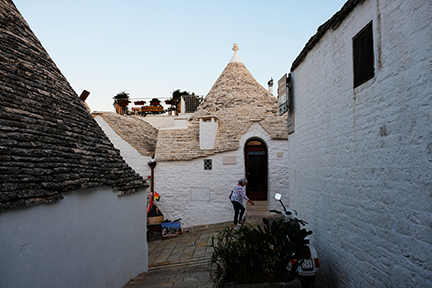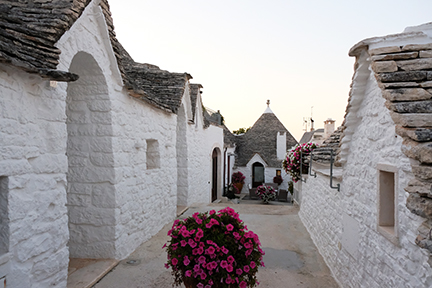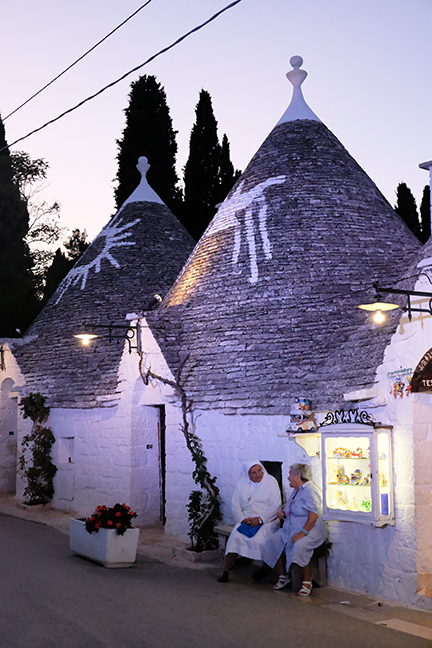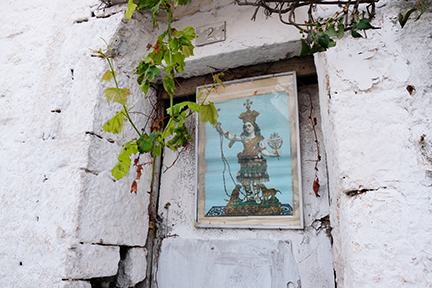Located in Italy’s Puglia region is the unique town of Alberobello. Characterized by its marvelous whitewashed limestone huts with cone shaped roofs, this village has been certified as a UNESCO World Heritage Site for its rich cultural and historical significance. While driving through the hilltop Rione Monti district, you will pass by hundreds of these distinct trullis, but the most highly concentrated area of trullis can be found in the town of Alberobello. Originating from the distinct historical circumstances of 14th century Puglia, you won’t find similar architecture anywhere else in the world.

The story behind these odd structures is quintessentially Italian: in an effort to fool authorities and evade property taxes people built these huts in a way that made them unqualified for property tax. The Counts of Conversano (the nobles of a nearby commune), demanded their subjects to construct these structures in an effort to evade the Kingdom of Naples’ edict that ordered a tax on every new urban construction. Back then if land did not classify as an inhabited settlement, you didn’t have to pay property taxes. So in order to dodge this tax they had to come up with a design that appeared unstable, temporary and therefore non-taxable. The iconic trulli design was the product of this conniving scheme.

While the huts were made to appear precarious, the ancient construction has actually proved to be quite indestructible. The trullis have endured thousands of years of usage and weathering, and people still live inside them today. They were built with materials that were abundant in the region: limestone and drywall. Somehow, the inside structures containing absolutely no elements of support remain intact. The round bases made of limestone are grafted onto the the natural limestone rock that lies beneath them. The round central room dominates the interior. With their thick walls, shortage of windows and small size, ideal temperature regulation in all seasons is guaranteed
The conical roofs are made of hundreds of horizontal limestone slabs which are carefully placed in a series of shrinking concentric circles. The conical shape ensured the runoff and collection of rainwater into impromptu cisterns or water storage tanks below. Capping off the top of the roofs are the handmade sandstone pinnacles. It is known that these pinnacles are the trademarks of the stonemasons that built the trullis. These pinnacles that vary in design seem to complete the distinguished form of the trulli. From afar you will find that each one different than the last, breaking up the horizon with distinguished elegance. They encapsulate the great pride and accomplishment every craftsman had for their unparalleled architectural accomplishment.

Some Trulli have symbols inscribed on their roofs. Holding religious and superstitious meanings people drew these images on their homes for protection. Superstition is deeply entwined in Italian culture, and historically there have been many traditions that seek to ward off “Il Malocchio” or the evil eye. Many of the symbols found on trulli roofs are meant to do just that.

If you ever find yourself in Italy’s Puglia region, it is well worth the trip to the town of Alberobello. The historical display of unique architectural expression with an intriguing origin tale of ancient tax evasion will leave a lasting impression that you’ll remember for years to come.
By: Emma Seiwell

